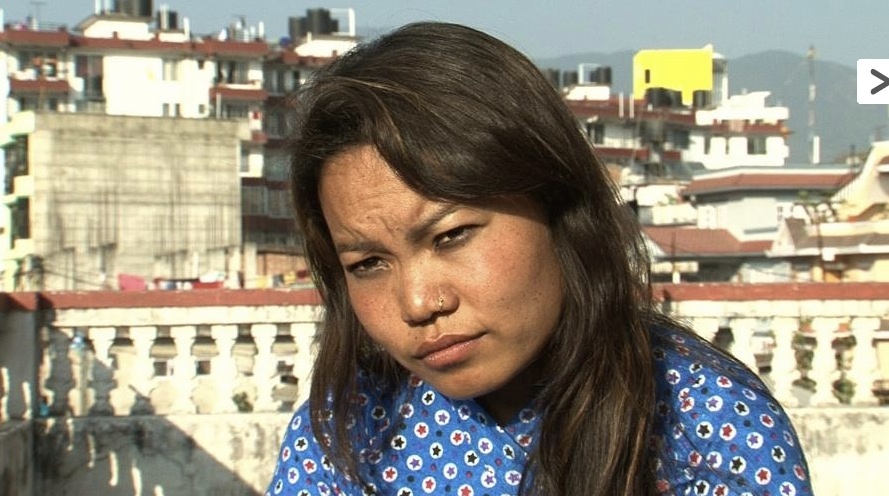
Bhawana Tamang was only 12-years when she lost her mother.
"My older brother's friend they said they'd get me a job," recalls Tamang. And with that promise of a job, her family sent Tamang to Kathmandu with strangers so she could help support the family.
It is this promise of a job that lures thousands of Nepali girls out of their homes in remote villages and thrusts them into the booming sex industry in India. According to the U.S. State Department's 2010 report on Human Trafficking, Nepali women and children are trafficked specifically for the purposes of commercial sexual exploitation both within the country and abroad. According to the State Department's most recent figures, an estimated 12,000 Nepali women and children are trafficked to Indian brothels and an unspecified number were victims of internal trafficking.
The report also notes that trafficking offenders are usually acquainted with the victims and often provide the parents of victims a "salary advance" in order to place the victim in a state of indebtedness. Tamang's experience was no different. Her family handed her over to people they knew, presumably in exchange of money. Tamang was simply too young to understand the details of the transaction.
One morning after her family sent her away, she found herself in unfamiliar surroundings. She was no longer in Nepal. "I was in a hotel. Later, I found out I had been taken to Calcutta," she says.
Nepal shares open borders with India and that has made it easy for the traffickers. According to Human Rights Watch, local law enforcement officials accept bribes to allow traffickers to transport girls to India. The State Department report notes that "[t]rafficking-related complicity by government officials remained a serious problem in Nepal, with traffickers using ties to politicians, business persons, state officials, police, customs officials, and border police to facilitate trafficking."
When Tamang arrived in Calcutta, she learned she had been sold for 40,000 rupees -- and her virginity promised to an Indian man.
"They had told the person that I would be for him," Tamang says.
Sitting on top of the roof of a women's shelter where she now lives, Tamang recalls how she was ordered to have sex with the man, but resisted.
"When that man tried to do those things with me I screeched and shouted loudly," she says. "I kept shouting and crying...after that he left angrily…and they really beat me up."
The State Department report notes that it is often girls from uneducated families, like Tamang, who are targeted by traffickers.
Once they get to India there is little help available for them. Most are hundreds of miles from home and in terrifying surroundings. They often don't speak Hindi, the main language in India. Many reports have noted that the Indian police are often in cahoots with the brothels, making it almost impossible for girls to get out.
According to Human Rights Watch, "police who frequent brothels as clients sometimes seek out under-age girls and return later to arrest them -- a way of extorting bigger bribes." The report also notes that existing laws in both countries have had virtually no effect on curbing trafficking.
In 2007, Nepal enacted new laws that prohibit all forms of trafficking and impose penalties ranging from 10 to 20 years' imprisonment. However, the problem in Nepal remains one of implementation. The State Department report found that despite new laws, "there were no investigations, prosecutions, or convictions of government officials complicit in trafficking."
According to the NGOs we spoke to, once these girls arrive in the brothels, often their only way out is when they contract HIV or AIDS. Many women return to Nepal with sexually transmitted diseases and are shunned. Families do not want them back. Also, the Nepali government has very few assistance programs for victims, mainly due to lack of resources.
Although it might be hard to imagine, Tamang was one of the lucky ones. She managed to escape. One night, after everyone had gone to sleep, she noticed the door was left open. The 12-year-old ran for her life. She found herself on the main street where she managed to convince a taxi-driver in her broken Hindi to take her to the local police station..
Meantime in Nepal, several victims of sex trafficking were coming together to start a support group to help other victims start new lives. The group is now known as Shakti Samuha. They work to rescue girls from India's sex industry and provide them with training and shelter. Tamang was the first girl the group helped.
When she returned to Nepal, Tamang said there was no way for her to track down her family, and no one came looking for her either. If she returned to her family, it is very likely that she would have been sold again. Girls who have escaped or been rescued find they have so few options they often go back to India or start working in the local Nepali sex industry.
Since returning from India, Tamang was trained as a beautician, and even worked in Oman for two years at a spa. Now waiting for a job in Kathmandu, she hopes to start her own beauty salon one day.



